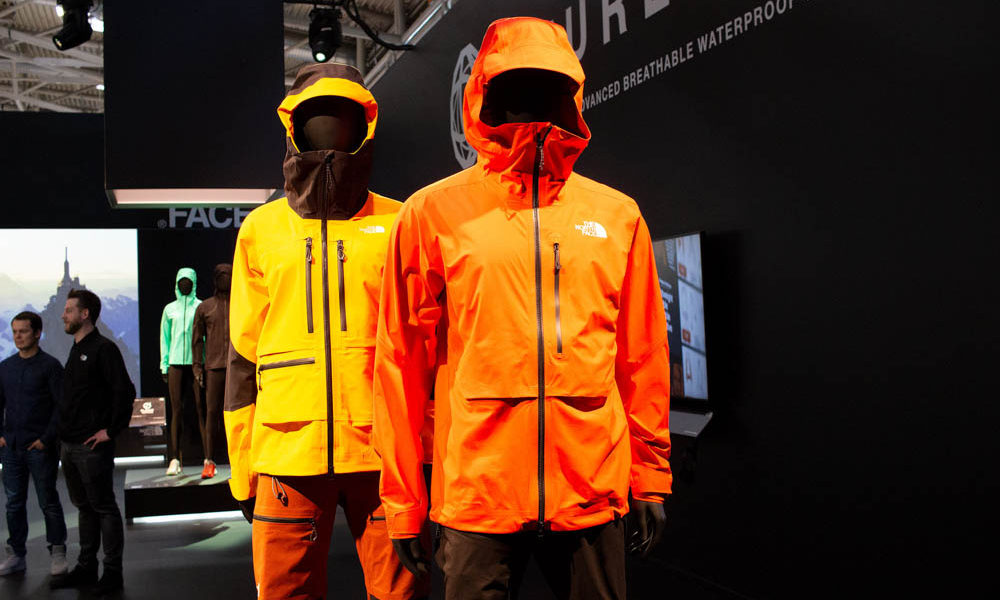We’re just back from the ISPO 2019 winter trade show in Munich, where outdoor brands showed off what’s new in their range for next winter. Arguably the biggest news was The North Face’s new FUTURELIGHT waterproof fabric technology, claimed to be ‘the most advanced breathable-waterproof outerwear material available’. Or at least it will be from September 2019 onwards.
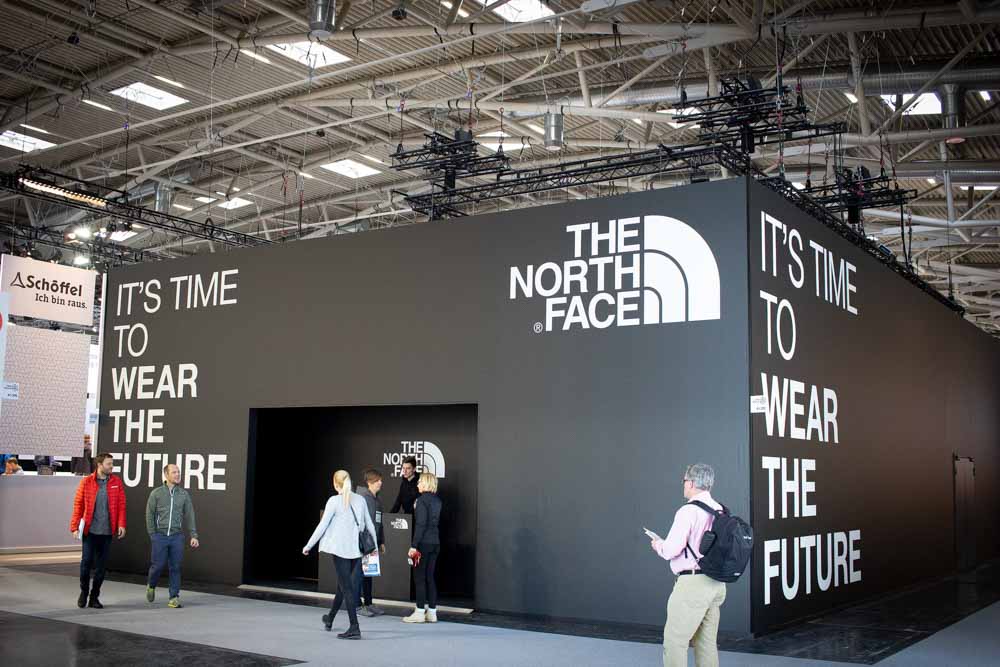
So what’s it all about? After tunnelling into TNF’s high security ISPO compound, we emerged into a high tech world of nano-woven technology, multiple giant video screens, a selection of shell-wearing mannequins and, right in the centre, a pair of one transparent water cylinders – one still, one awash with a stream of rising water bubbles. Why all the kerfuffle? In short, FUTURELIGHT is a bit of a big deal to The North Face and, if they’re right, the next big thing in waterproofs. It’s taken them two years to develop and they’ve put a lot of metaphorical eggs in its nano-spun basket.
Nanospinning…
In a nutshell, the new fabric is engineered at a nano level from PU, tiny extruded spun fibres of the stuff. An idiot’s guide, which is about all I’m capable of understanding, is that microscopic PU fibres are extruded from around 200,000 tiny nozzles into a sort of super thin criss-crossed mesh. The holes between the fibres are sized to allow moisture vapour and air to escape – that’s where those bubbles come in – but keep water out. A big, bubbling, glass water tank made the point graphically. What’s very cool about the process is that the nano-woven membrane can be micro-engineered to alter the properties of the membrane. Add more layers of nano-stuff and you increase waterproofing. Dial it back and you get a more breathable fabric with slightly less water resistance.
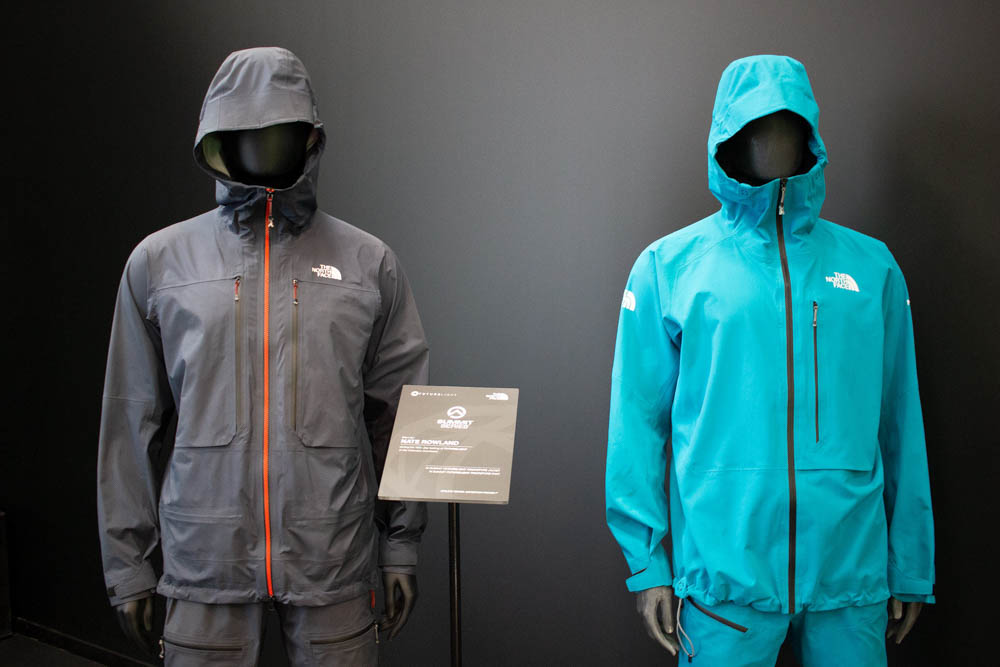
What that means is the technology can be customised to give greater breathability for the Flight Series fast and light running kit that was on display on one part of the stand and more waterproofing for the mountaineering-orientated Summit Series kit that was the main focus.
It’s not just the membrane. Using different face and lining fabrics to sandwich the nano-stuff also affects the durability and breathability of the overall fabric. Overall, the claim is that it’s right of the top of the pile when it comes to dissipating heat and steam when you’re working hard, but without compromising elsewhere. How it works in the real world, we’ll have to wait and see, but what was striking about the display clothing was just how soft and light the fabric felt, even the harder-core mountain shell clothing.
It’s also worth noting that TNF isn’t the only brand embracing nano-spun fabrics, both Polartec NeoShell and Outdoor Research’s AscentShell use related processes, but it’s still a complex and relatively unusual technology in the outdoors world. TNF says, somewhat predictably, that in tests, FUTURELIGHT outperforms its rivals.
Tested but soft and quiet
The other interesting facet of FUTURELIGHT is that in functional terms, it’s softly spoken – quite literally – but carries a big stick. The jackets scattered around the stand were noticeably soft, light, stretchy and quiet in feel. Light years away from Gore-Tex Pro, for example, which tends towards the crackly in use. Does that mean it’s less durable? Not according to The North Face, who’ve put a lot of mountain days on prototype FUTURELIGHT clothing. One set of the ski-mountaineering gear managed an ascent of Everest followed by a ski descent of Lhtose worn by sponsored athletes Jim Morrison and Hilaree Nelson.
A close look at the kit, as displayed, showed no obvious wear or abrasion in areas covered by pack-straps, waist-belts or harness or at the ankles. Same thing with the set which has put in 100 consecutive mountain days.
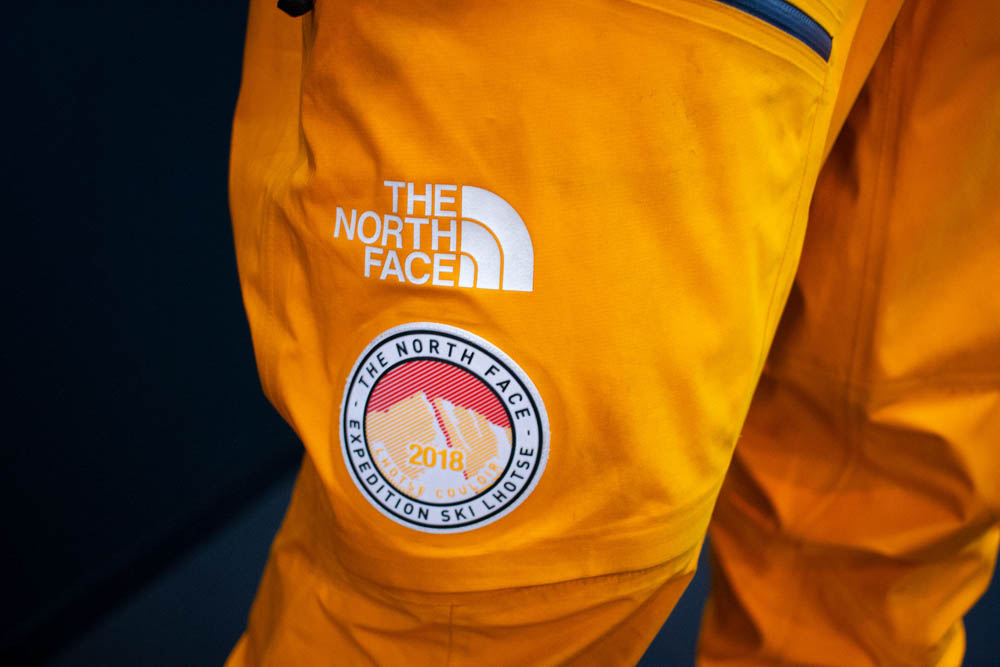
That might sound unlikely, but modern fabrics can be engineered to have a high level of abrasion resistance alongside a soft handle. On top of that, TNF has put the fabric through a serious amount of lab testing focussing both on waterproofing and durability.
Green credentials
Alongside the focus on performance, TNF has made huge efforts to keep the project as green and sustainable as possible. Its Korean-based manufacturing partner uses solar energy to power its plants and is focussed on the use of 100% recycled raw materials for its custom-developed external face fabrics. The DWR – water repellent – treatment used on the fabric is PFC-free, but is still claimed to maintain 80% of its water-repellency after 80 wash cycles. All good to see.
It’d be naive to pretend we haven’t been here before. Just about every year a new ‘most breathable ever’ waterproof fabric appears in a fanfare of hype. Often it’s impressive in one way, but less so in others – durable waterproofness has proved a particularly hard nut to crack. But in tests, they say, it outperforms both the Polartec and OR nano-spun alternatives.
Has The North Face managed the improbable? Impossible to say at this point, but as of autumn 2019 – think September onwards – the bulk of its high-end technical waterproofs will use the new fabric, along with single-wall tents, gloves and mittens. By 2020 the bulk of the brand’s high-end waterproofs will use it, which shows real confidence in the technology.
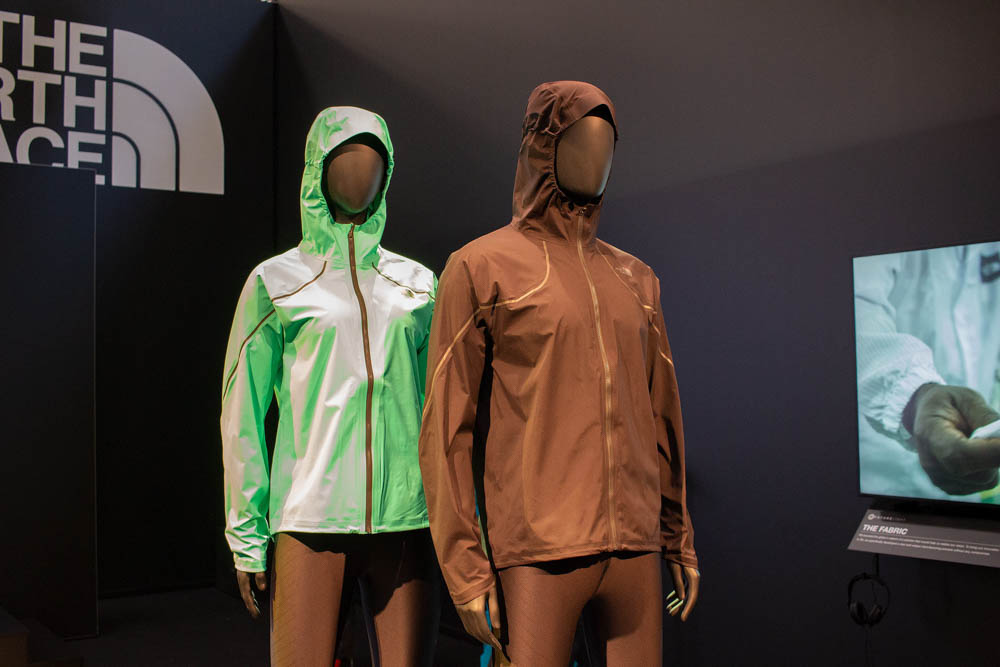
That doesn’t mean the brand won’t use other waterproof fabrics. There will still be Gore-Tex featured in the lifestyle collections and DryVent where price is a priority, but the bulk of the brand’s performance waterproofs will use FUTURELIGHT – this is serious stuff.
Will it be the perfect waterproof fabric combining durable water and wind-proofing, soft-shell type comfort and breathability along with deceptive toughness? Right now it’s hard to say – will a fabric that can cope with ski-mountaineering on Everest be able to hack it in Scottish winter conditions – the clothing equivalent of a November mid-week football fixture at Stoke City?
Who knows, but it should be fun – or not – finding out. Watch this space.
More info (eventually) at thenorthface.com/FUTURELIGHT


